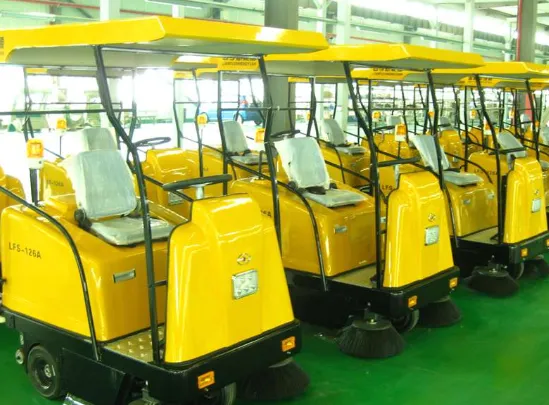
-
 Afrikaans
Afrikaans -
 Albanian
Albanian -
 Amharic
Amharic -
 Arabic
Arabic -
 Armenian
Armenian -
 Azerbaijani
Azerbaijani -
 Basque
Basque -
 Belarusian
Belarusian -
 Bengali
Bengali -
 Bosnian
Bosnian -
 Bulgarian
Bulgarian -
 Catalan
Catalan -
 Cebuano
Cebuano -
 China
China -
 China (Taiwan)
China (Taiwan) -
 Corsican
Corsican -
 Croatian
Croatian -
 Czech
Czech -
 Danish
Danish -
 Dutch
Dutch -
 English
English -
 Esperanto
Esperanto -
 Estonian
Estonian -
 Finnish
Finnish -
 French
French -
 Frisian
Frisian -
 Galician
Galician -
 Georgian
Georgian -
 German
German -
 Greek
Greek -
 Gujarati
Gujarati -
 Haitian Creole
Haitian Creole -
 hausa
hausa -
 hawaiian
hawaiian -
 Hebrew
Hebrew -
 Hindi
Hindi -
 Miao
Miao -
 Hungarian
Hungarian -
 Icelandic
Icelandic -
 igbo
igbo -
 Indonesian
Indonesian -
 irish
irish -
 Italian
Italian -
 Japanese
Japanese -
 Javanese
Javanese -
 Kannada
Kannada -
 kazakh
kazakh -
 Khmer
Khmer -
 Rwandese
Rwandese -
 Korean
Korean -
 Kurdish
Kurdish -
 Kyrgyz
Kyrgyz -
 Lao
Lao -
 Latin
Latin -
 Latvian
Latvian -
 Lithuanian
Lithuanian -
 Luxembourgish
Luxembourgish -
 Macedonian
Macedonian -
 Malgashi
Malgashi -
 Malay
Malay -
 Malayalam
Malayalam -
 Maltese
Maltese -
 Maori
Maori -
 Marathi
Marathi -
 Mongolian
Mongolian -
 Myanmar
Myanmar -
 Nepali
Nepali -
 Norwegian
Norwegian -
 Norwegian
Norwegian -
 Occitan
Occitan -
 Pashto
Pashto -
 Persian
Persian -
 Polish
Polish -
 Portuguese
Portuguese -
 Punjabi
Punjabi -
 Romanian
Romanian -
 Russian
Russian -
 Samoan
Samoan -
 Scottish Gaelic
Scottish Gaelic -
 Serbian
Serbian -
 Sesotho
Sesotho -
 Shona
Shona -
 Sindhi
Sindhi -
 Sinhala
Sinhala -
 Slovak
Slovak -
 Slovenian
Slovenian -
 Somali
Somali -
 Spanish
Spanish -
 Sundanese
Sundanese -
 Swahili
Swahili -
 Swedish
Swedish -
 Tagalog
Tagalog -
 Tajik
Tajik -
 Tamil
Tamil -
 Tatar
Tatar -
 Telugu
Telugu -
 Thai
Thai -
 Turkish
Turkish -
 Turkmen
Turkmen -
 Ukrainian
Ukrainian -
 Urdu
Urdu -
 Uighur
Uighur -
 Uzbek
Uzbek -
 Vietnamese
Vietnamese -
 Welsh
Welsh -
 Bantu
Bantu -
 Yiddish
Yiddish -
 Yoruba
Yoruba -
 Zulu
Zulu
Jan . 29, 2025 03:43
Back to list
frp fan
Choosing the right type of fan for industrial applications is crucial due to the performance, cost, and environmental factors. Among the various types available, FRP (Fiberglass Reinforced Plastic) fans are increasingly becoming popular across multiple sectors. This article delves into the advantages of FRP fans and why they are an essential component for businesses aiming to optimize their operations while ensuring environmental considerations.
Moreover, FRP fans offer a lower energy consumption footprint. With their aerodynamic design capabilities, these fans enhance air movement efficiency, which directly affects power use. By decreasing electricity consumption, businesses can significantly cut operating costs while also meeting sustainability objectives. Such efficiency is increasingly important as industries face growing pressure to reduce carbon emissions and comply with global environmental standards. In terms of authority within the market, FRP fans have established a reputation backed by comprehensive field data and rigorous testing. Their widespread adoption is supported by third-party validations and industry certifications, reassuring stakeholders of their performance claims. This widespread acceptance across industries testifies to their reliability and establishes them as a tried and tested solution in challenging applications. The trustworthiness of FRP fan systems stems from their continued performance even under the harshest conditions. Many case studies highlight their ability to tackle environments with extreme temperatures and corrosive substances, outperforming traditional metal fans in longevity and efficiency. For decision-makers and engineers, such proven resilience reduces the risk associated with fan system investments. FRP fans, with their blend of durability, efficiency, and adaptability, are becoming an indispensable choice for progressive industries. They offer unique solutions that not only solve immediate operational challenges but also align with long-term strategic goals for efficiency and sustainability. As industries strive for excellence, these fans are laying the groundwork for innovative pathways in industrial airflow solutions.


Moreover, FRP fans offer a lower energy consumption footprint. With their aerodynamic design capabilities, these fans enhance air movement efficiency, which directly affects power use. By decreasing electricity consumption, businesses can significantly cut operating costs while also meeting sustainability objectives. Such efficiency is increasingly important as industries face growing pressure to reduce carbon emissions and comply with global environmental standards. In terms of authority within the market, FRP fans have established a reputation backed by comprehensive field data and rigorous testing. Their widespread adoption is supported by third-party validations and industry certifications, reassuring stakeholders of their performance claims. This widespread acceptance across industries testifies to their reliability and establishes them as a tried and tested solution in challenging applications. The trustworthiness of FRP fan systems stems from their continued performance even under the harshest conditions. Many case studies highlight their ability to tackle environments with extreme temperatures and corrosive substances, outperforming traditional metal fans in longevity and efficiency. For decision-makers and engineers, such proven resilience reduces the risk associated with fan system investments. FRP fans, with their blend of durability, efficiency, and adaptability, are becoming an indispensable choice for progressive industries. They offer unique solutions that not only solve immediate operational challenges but also align with long-term strategic goals for efficiency and sustainability. As industries strive for excellence, these fans are laying the groundwork for innovative pathways in industrial airflow solutions.
Next:
Related Products
Latest news
-
Exploring the Benefits of Top Hammer Drifter Rods for Enhanced Drilling PerformanceNewsJun.10,2025
-
High-Precision Fiberglass Winding Machine for GRP/FRP Pipe Production – Reliable & Efficient SolutionsNewsJun.10,2025
-
FRP Pipes & Fittings for Shipbuilding - Corrosion-Resistant & LightweightNewsJun.09,2025
-
Premium FRP Flooring Solutions Durable & Slip-ResistantNewsJun.09,2025
-
Premium Fiberglass Rectangular Tanks Durable & Lightweight SolutionNewsJun.09,2025
-
Tapered Drill String Design Guide Durable Performance & UsesNewsJun.09,2025









